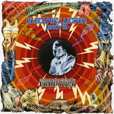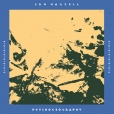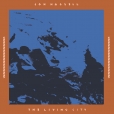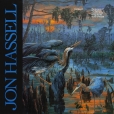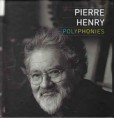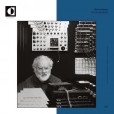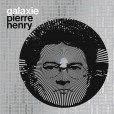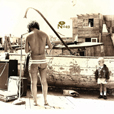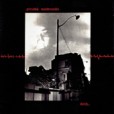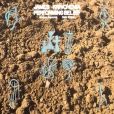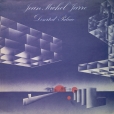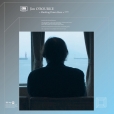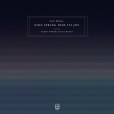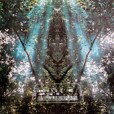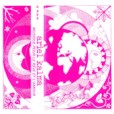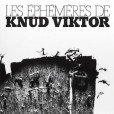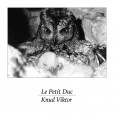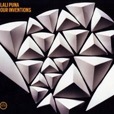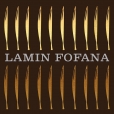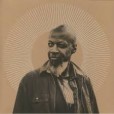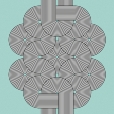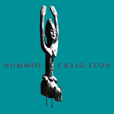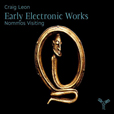Your basket is empty

Inspired by Guy Debord, the detournement of the 1990 album City: Works Of Fiction, assembled twenty-four years later by Hassell, from alternate takes, demos and studio jams, in the same spirit of hip-hop-inspired, dubwise future-funk.
First time on vinyl.
A September 1989 performance at the World Financial Center Winter Garden in New York City, with Brian Eno mixing live.
‘During this period Hassell was inspired by the increasingly innovative production techniques being used in hip-hop, in particular the hyper-collaged sampledelic barrage of the Bomb Squad’s work with Public Enemy, hearing it as a kind of extension of the tape splicing that Teo Macero brought to his work with Miles Davis. He began to incorporate more of this aesthetic into his own music, playing over loops of his own performances and riffing on angular juxtapositions of noise, rhythm and melody.’
First time on vinyl.
Melodic, fragile, enchanting music for the trippy Juliette Greco film, plus rare bits and bobs. ‘Layered, looped vocals, gossamer female voices, plucked strings, white noise wind, brooding treated piano.’
An overview, 1958-2017: thirty-three works, including landmarks like Le Voyage, Messe Pour le Temps Présent, Variations Pour Une Porte Et Un Soupir, Messe De Liverpool, Apocalypse De Jean and Dracula; also including fourteen never before released, like La Note Seule, and Grand Tremblement, composed in 2017, the year of his death.
Discs in digi-sleeves, inside a box with a lift-off lid. 100-page booklet.
1970s bottlings of the ‘crystal giggling energy’ of muse Vista, through a pioneering mix of one-stop synths, tape reversal, feedback and so on. Supposedly the kind of thing you hear during a near-death experience.
Ravishing jazz and electronics from the same stumbling, giddy reaches as La Monte Young and Terry Riley, recorded in Texas in 1981 on multi-tracked organ and synths (with tape loops of birds and wind-chimes), and acoustic guitar.
‘My music is designed to enhance deep meditative, or altered states, to allow the listener to personally connect to the Creator of All that exists in the Universe. My music style is to first create a foundation using cyclic, polyrhythmic music, then build several layers of improvised leads and rhythms that allows you to transcend time and space… We have Memories of Past Lives that reverberate in our hearts like Echoes From Ancient Caves.’
Thrilling, intensely rhythmic, questing music, featuring brilliant, dynamic contributions by Joshua Abrams and Sam Wilkes.
Very warmly recommended. Check out Bracelets For Unicorns.
‘The core of the album is a lush, opulent matrix of percussion ranging from the familiar — hand claps and drum machines — to the mysteriously verdant, sampled largely from Krivchenia’s own performed field recorded collection. For years, he would record any and all of his musical encounters with natural objects: performing on a particularly resonant log on a hike, throwing rocks into a pristine pond, tap dancing in the mud. Not just a novel set of sounds, but a new rhythmic language. The particular give, the anticipatory rustle, the extra breath of a hollow log when functioning as a kickdrum provides a greenness that overtakes the rhythmic grid, giving this music a peculiar kind of stickiness.’
Recorded by Jean Michel Jarre in 1972, during his work experience at G.R.M. (Groupe de Recherches Musicales), for a commission to provide sound for public spaces like airports and libraries. Fifteen tracks made with only two synthesizers (EMS VCS3 & Farfisa organ) in an experimental and very minimal style.
‘It was a crazy album, totally homemade, with rhythms that I made in my student room, with a minimum of equipment and at the same time electronic sounds that I stole from the GRM where I went at night after stealing the keys to the studios. It is a pirate record, in every sense of the word, in which we find what I did afterwards.’
The first time out for these amazing recordings, meticulously restored and presented by the Institut for Dansk Lydarkæologi. The 24-page booklet is richly illustrated by Viktor’s marvellous photography, besides extensive, absorbing notes.
‘After studying painting in Copenhagen, in 1961 Knud Viktor moved into some dilapidated 14th century limestone buildings on the slopes of the Luberon mountain in Provence in 1961. He describes being disrupted in his painting by the thousands of cicadae demanding his attention. “They settled on your body, on the walls of houses, everywhere. Cicadas everywhere.” Their sound mirrored the sunlight: when a cloud passed before the sun they would stop sounding or change their rhythm. Their sounds led him to experiment with field recordings.
‘Often untreated and clearly recognizable, these recordings leave the inherent melody and rhythm of the animal sounds to sing for themselves, layering recordings to create simple and elegant sound images. In two of the twenty pieces Viktor’s own voice blends with the animals, as he recites two poems. One about the singing vineyard populated by musical crickets, the other painting an autumn picture with wine bubbling in the barrels as we hear the wine flies humming.’
Recordings of an owls nest throughout a nesting season in the spring and summer of 1978, with Viktor himself telling the story of an owl family. Originally planned to fit on a 7” record, but never released till now. The booklet includes Danish and English translations of the original French narration, illustrated with a series of Viktor’s own photographs of the owls.
Scintillating, alchemical kosmische; visionary, deep, and luminous; and beautifully sleeved, with gold foiling and silver ink.
Works In Metal fans out a set of acid treatments and finely sharpened blades — cutting, shaping, suspending form. Sounds are melted down and forged as if liquid metal.
The works are paired. Arc’s Blue Flame previews the smoking volatility at the album’s core. Echoes and resonance soften the dissonant, bright textures; all overlaid with Fofana’s signature, percussive kick drums. Welding drills into the discordant thrills and spills of metamorphosis. Sparks fly and the bittersweet arc of change unfolds.
Fofana discreetly folds in text, poetry, and field recordings, spooring their decomposition and recomposition with a prismatic point of view. The coupling Obscure Light (Decomposition) and Obscure Light (Recomposition) marks something new in his music. The pulse is brightly honed, cascading beyond the dancefloor, exultingly eluding musical genre.
Works in Metal is perhaps Fofana’s most narrative album. At its heart is the killer, extended Lure of the Fragment / So Another Sound Suggests Itself. Melodies circle in call-and-response patterns, balancing proximity and distance, signalling the inward gravity required to work with metal. A nested story-line, with birds flying in; an album within an album. Dredging up memories and associations, Fofana filters in selections from his sound-archives. Layered with synths, field recordings become instruments in their own right. The last three minutes proffer precious clarity — a memory, in miniature, flashed onto molten metal.
In 1943 Suzanne Césaire declared that ‘our surrealism will then supply them the leaven from their very depths. It will be time finally to transcend the sordid contemporary antinomies: Whites-Blacks, Europeans-Africans, civilized-savage: the powerful magic of the mahoulis will be recovered, drawn from the very wellsprings of life. Colonial idiocies will be purified by the welding arc’s blue flame. The mettle of our metal, our cutting edge of steel, our unique communions — all will be recovered’. Works in Metal is a tribute to her prophecy; its enactment, sculpted in sound.
‘Swooping, sub-heavy sci-fi from Riz Maslen, under a new moniker.
‘Heavy-lidded and ethereal, its balance of bass weight, mechanical metre, and darkly tinted new age feels like a cinematic re-approach to some of the textures, moods, and themes of her 1996 Laundrophonic maxi, under the alias Neotropic.
‘Stairway 13 folds in decades of experience in sound design and theatre, along with shards and elements abstracted from Riz’ more recent folk-like music, zoning into a deep, retreated, altogether dreamlike and expansive atmosphere. The scale and soundscape is reminiscent of Geinoh Yamashirogumi and their Ecophony album series, resonating to similar frequencies and exploring themes of chaos and rebirth in feature-length form.
‘The four parts spread and swoop as single extended sides across this double LP. Carried by waves of sub bass and heavenly chorus, and later punctuated with autonomic clicks of machinery, whirrs, and pulses, the work forms a gothic, otherworldly ambience. A subtle space opera.’
Terrific album, originally out on Takoma in 1981 — an edgy, angsty, spiritual mix of Suicide, Cluster, La Monte Young, Terry Riley, West African rhythms… which still sounds bang up to date. Hotly recommended.
